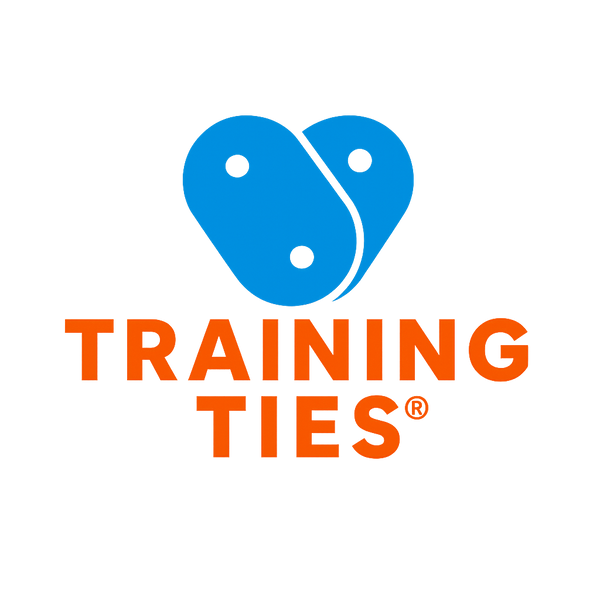
Why Montessori Teachers Wait Until Age 5 to Teach Shoe-Tying (And What They Do First)
Share
Last week, we watched a four-year-old in a Montessori classroom spend twenty minutes transferring water between two pitchers. Back and forth, back and forth. Her concentration was absolute.
Her mother, observing through the window, later asked the teacher, "Why doesn't she just... stop? She's been doing the same thing over and over."
"She's not practicing pouring," the teacher explained. "She's building the foundation for tying her shoes."
The mother looked skeptical. Most parents do when they hear this. But after decades working with children in special education and Montessori classrooms, we've learned something profound:
We've been teaching shoe-tying backwards.
The Myth of "Ready" at Four
Visit any parenting forum, and you'll find anxious posts: "My 4-year-old can't tie shoes yet. Should I be worried?"
The mainstream parenting world has decided that four is the magic age for shoe-tying.
But here's what Maria Montessori discovered over a century ago, and what occupational therapists have been confirming with modern research:
Shoe-tying isn't one skill. It's the culmination of dozens of micro-skills that develop sequentially over years.
When we rush to teach shoe-tying at four, we're essentially asking children to write a symphony before they've learned to read music.
The Hidden Curriculum Before the Bow
In Montessori classrooms, teachers don't even introduce shoe-tying frames until children have mastered what they call the "prerequisites of independence."
These aren't arbitrary activities—they're precisely designed to build the exact muscles, movements, and neural pathways needed for complex tasks like shoe-tying.
Age 2-3: The Foundation Year
Watch a Montessori toddler's day, and you'll see them:
• Spooning beans from bowl to bowl (building pincer grip strength)
• Threading large beads (bilateral coordination—using both hands together)
• Opening and closing containers (finger strength and wrist rotation)
• Carrying trays without spilling (gross motor control and balance)
Each activity looks simple. Even pointless.
But neurologically? These toddlers are laying down the myelin sheaths that will make complex fine motor tasks possible later.
Dr. Jane Healy's research in neuroplasticity shows that these repetitive, purposeful movements in early childhood literally shape the brain's architecture. Every time a three-year-old successfully transfers water without spilling, they're building the same focus and hand control they'll need for shoe-tying.
Age 3-4: The Refinement Phase
This is when Montessori guides introduce what we call "pre-tying" work:
• Braiding with thick ribbons (the over-under pattern of laces)
• Weaving on simple frames (spatial awareness and sequencing)
• Twisting exercises with pipe cleaners (finger dexterity)
• Button frames before bow-tying frames (sequential dressing skills)
Notice what's missing? Actual shoes.
They're building competence through isolation of difficulty—another Montessori principle that mainstream education is just beginning to appreciate. By separating the motor skill from the pressure of "getting dressed," children develop confidence alongside capability.
Age 4-5: The Integration Window
Only now do children encounter the bow-tying frame—still not on actual shoes.
Children at this stage will often choose to practice tying for 30-45 minutes straight, achieving what Montessori called "normalization"—deep concentration that creates lasting neural pathways.
But here's the critical difference: They're choosing this work.
They've built up to it. Their hands are ready, their minds are ready, and most importantly, their spirits are ready. There's no frustration, no tears, no "I can't do it!"
Because they've already done it, in a hundred different ways.
The Research That Changed Everything
A 2019 study in the Journal of Occupational Therapy tracked two groups of children learning to tie shoes.
Group 1: Traditional "direct instruction" at age 4 Group 2: Montessori-inspired "foundational skills" approach, waiting until age 5
The results were staggering:
✓ The foundational skills group achieved mastery 3x faster
✓ They retained the skill better (98% vs. 67% after 6 months)
✓ They showed significantly less frustration during learning
✓ They spontaneously transferred the skill to other areas
But here's the finding that made us rethink everything:
The children who waited until age 5 didn't just learn shoe-tying better. They showed improved executive function across all areas—better working memory, cognitive flexibility, and inhibitory control.
By building the foundation first, we weren't just teaching shoe-tying. We were building better brains.
What This Means for Your Child
If your three-year-old is obsessed with pouring water, let them pour.
If your four-year-old wants to braid friendship bracelets for hours, provide materials.
These aren't distractions from "real" learning—they ARE the learning.
The Home Preparation Sequence
Phase 1: Strengthening (Ages 2-3)
Start here to build hand strength and coordination:
• Playdough manipulation (make "snakes" and "balls") • Spray bottles for watering plants (hand strength) • Tongs and tweezers for picking up pom-poms (pincer grip) • Clothespins on a line (finger strength and bilateral coordination)
Phase 2: Patterning (Ages 3-4)
Add these activities to develop sequencing and spatial awareness:
• Lacing cards (start with straight lines, progress to curves) • Simple weaving with paper strips • Pipe cleaner sculptures (bending and shaping) • Practice with ribbon on a gift box (the motion without the pressure)
Phase 3: Integration (Ages 4-5)
Finally, bring it all together:
• Bow-tying frame or practice board (isolated practice) • "Teaching" stuffed animals to tie (role reversal builds confidence) • Gross motor bow-tying (use a jump rope around a tree) • Finally—actual shoes, but sitting down, no time pressure
Why We Created Training Ties
Even with perfect preparation, there's often a moment where children need just a bit of support to connect all their skills.
That's why we developed Training Ties after years of watching children struggle unnecessarily.
Our family has spent decades in special education classrooms, and we weren't trying to rush the process when we created this tool. We were trying to honor it.
Training Ties doesn't replace the foundational work—it celebrates it by providing just enough support for children to experience success while their skills consolidate.
It's the difference between a crutch and a scaffold.
A crutch does the work for you. A scaffold supports you while you build your own strength.
The Patience Paradox
Here's what we've learned from decades of working with children:
The parents who wait the longest often have children who learn the fastest.
It's counterintuitive. It challenges every "early is better" message we receive.
But when we trust the child's developmental timeline—when we prepare the foundation instead of rushing to the roof—we get something miraculous:
Children who don't just know how to tie their shoes. Children who approach every challenge with confidence, knowing they have the skills to break it down, build it up, and master it.
Your Child's Timeline
If your five-year-old can't tie shoes yet, you haven't failed.
If your six-year-old still struggles, they're not behind.
They're on their own timeline, building their own foundation.
What matters isn't when they learn. It's how they learn—from a place of capability, not compliance. From intrinsic motivation, not external pressure.
Watch your child carefully:
• Are they drawn to activities that build hand strength? Provide them. • Are they interested in patterns and sequences? Offer opportunities. • Are they ready for the actual task? You'll know because they'll choose it, again and again.
The Revolution in a Loop
Maria Montessori said, "Never help a child with a task at which he feels he can succeed."
But she also said, "The hand is the instrument of intelligence."
When we honor both truths—when we prepare the hand AND respect the child's readiness—we don't just teach shoe-tying.
We teach children that they are capable of mastering their world, one carefully prepared step at a time.
So the next time you see a three-year-old pouring water back and forth, back and forth, don't interrupt. Don't redirect. Don't worry that they're "just playing."
They're building the brain that will tie shoes, write stories, solve problems, and change the world.
One perfectly concentrated moment at a time.
Ready to support your child's journey to independence?
Join thousands of parents who trust Training Ties to honor their child's development while building lasting independence. Our teacher-invented tool provides the perfect scaffold when your child is ready for that final step.
From our family to yours, we're here to support your child's independence journey.
